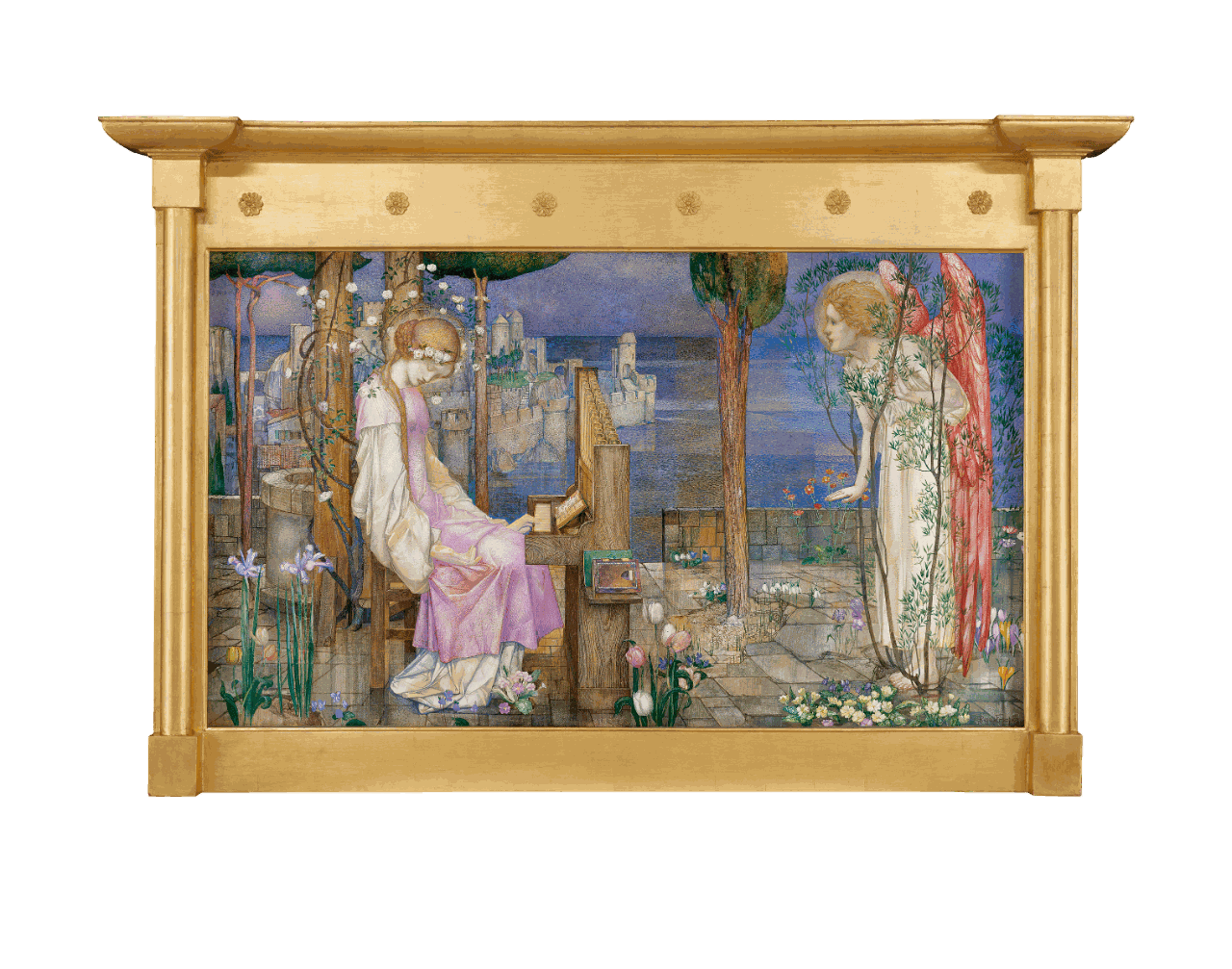Edward Reginald Frampton (1872-1923)
Provenance
With the Fine Art Society, 1924;
Florence Louisa Stevenson (1858-1946), 1 Queen’s Gate Gardens, London SW, bought from the above;
By descent to her daughter, Laura Janetta Stevenson (1889-1972), Gleam Tor, Bovey Tracey, Devon;
Her executors’ sale at Bearnes, Torquay, 6th March 1973, lot 178;
Julian Hartnoll;
Christine McVie (of Fleetwood Mac), London;
Exhibitions
Royal Academy, 1917;
Paris Salon, 1923, no. 121;
Possibly Bath Society of Artists, Oct 1923;
Fine Art Society, Reginald Frampton Memorial Exhibition, 1924
Literature
Vallance, Aymer, “The Paintings of Reginald Frampton, R.O.I.” International Studio, Volume 66 (1919), pp. 66-77, illustrated p 71
This 1917 watercolour and tempera of St Cecilia is the culmination of Frampton's series of works depicting St Cecilia in enchanted sleep. The subject, based on Tennyson's poem The Palace of Art, occupied him for at least 20 years, a period covering his transition from painting in oils to tempera.
Or in a clear-wall’d city on the sea,
Near gilded organ-pipes, her hair with white roses, slept Saint Cecily;
An angel look’d at her.
The poem's theme is that the human soul cannot live by the solitary pursuit of the arts, alone in a palace - it will despair, and slumber enchanted, in eternal stillness. In Frampton's rendering, we see St Cecilia, the patron saint of music, in eternal sleep before the Palace of Art.
When the 26-year-old Frampton first saw Burne-Jones’s work at the New Gallery in London in 1898-9, he was struck ‘with the force of a very revelation, opening his eyes to the supreme possibilities of the human form in decoration’ (Vallance). The legend of the Briar Rose, which possessed Burne-Jones for over 30 years, with many versions painted, offered a dreamscape, a vision of an enchanted world of deathless sleep, with the prospect of ultimate awakening from a lover’s kiss. Similarly, Frampton became obsessed with Tennyson’s vision of a Palace of Art, and painted St Cecilia in and before the Palace, initially in oils in a version shown at the Royal Academy in 1896, and then in at least six further versions, culminating in this final tempera and watercolour of 1917.
